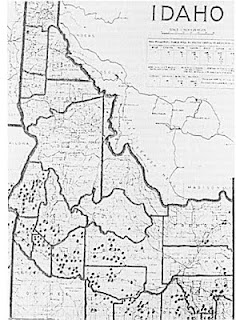 |
| Tribute photo. Richard Beal’s Blog. |
He got his chance the spring when he was twenty years old. The famous TS Ranch in northern Nevada basically “gave him a tryout,” and he landed a job there despite his lack of experience. Another hand warned him that the hard work had just begun. Ray worried until he discovered it was “not the kind of [hard] work I was used to.” He then learned the job from the ground up. Along the way, his interest turned to training horses for all-around range and corral work.
Movies and TV shows notwithstanding, normal training need not require brutally “breaking” the animals. The methods Ray learned – traditional on the ranges of Nevada, southern Idaho, and southeast Oregon – involve a staged approach. The trainer introduces a young horse to successively more coercive tack, and expects more complex behavior. Still, the overall aim was to subdue the subject, and more “strenuous” methods might be applied for particularly recalcitrant stock.
With a growing family of his own, Ray moved to California and began training colts, shoeing horses, and doing “day work” for ranchers who knew he was a top hand. In late 1960 or early 1961, he met Tom Dorrance, whose ability to train “difficult” horses was well known in ranching circles. Dorrance practiced a form of “natural” training that traced back to nineteenth century England. The hit movie The Horse Whisperer featured a simplified-for-Hollywood version of such gentler methods.
Ray started with a special affinity with horses, yet even he took awhile to adapt. He could handle – stay on – a rough horse better than most, but this was different. The rider had to sense, understand, and accept the horse’s needs and desires. Eventually, he evolved a soft approach to, as he put it, “make the wrong thing difficult and the right thing easy.”
Owners began bringing “impossible” horses to him. Soon he had so much problem-horse business, he couldn’t keep up with his regular work. Also, he found that he could “fix” a horse, but the problems sometimes returned once they were out of his hands. That led him to the conclusion that a lasting answer might require him to fix the riders too – to get them to understand and respect the horse’s point of view.
Around 1971, the volume of work – and the need to train both horse and rider – led Ray into the full-time training clinic business. After that, for almost forty years, Hunt ran clinics, wrote books, and offered videos to show riders and owners how to get the most out of their horses … without overt coercion or punishment.
Ray remained active until near the time of his death in March 2009. By then, he received more requests for clinics than there were hours in a day, and had to turn many down. Conventional recognition came his way – Top Hand Award, Western Horseman of the Year in 2005, etc. – but Hunt’s true legacies are the modern trainers who now practice natural training methods and the many riders he influenced personally.
| References: Linda Boston Franke, “Ray Hunt: A Legend in His Own Time,” Ranch & Country Magazine (2009). |
| “Ray Hunt, 1929-2009,” Western Horseman (January 2005). [Retitled and reprinted after his death in 2009.] |
| Ray Hunt: Master of Communication. |
| Ray Hunt, Millie Hunt, Roy Hunt, Think Harmony with Horses, Pioneer Publishing Company (June 1995). |






























